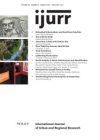The worst global financial crisis since the Great Depression has drawn worldwide attention to America’s subprime mortgage sector and its linkages with predatory exploitation in working‐class and racially marginalized communities. During nearly two decades of expansion, agents of subprime capital fought regulation and reform by (1) using the doctrine of risk‐based pricing to equate financial innovation with democratized access to capital, (2) appealing to the cultural myths of the ‘American Dream’ of homeownership, and (3) dismissing well‐documented cases of racial discrimination and predatory abuse as anecdotal evidence of rare problems confined to a few lost‐cause places in what is otherwise a benevolent free‐market landscape. In this article, we challenge these three tactics. Properly adapted and updated, Harvey’s (1974) theory of class‐monopoly rent allows us to map and interpret the localized, neighborhood exploitations of class and race in several hundred US metropolitan areas as they were woven through Wall Street securitization conduits into global networks of debt and investment. Understanding the structural inequalities of class‐monopoly rent is essential for analysis, organizing, and policy responses to the crisis.
Details
Written by:
ELVIN WYLY, MARKUS MOOS, DANIEL HAMMEL, EMANUEL KABAHIZI
Digital Object Identifier (DOI)
10.1111/j.1468-2427.2009.00870.x
About DOI
Read full article as PDF
Read full article as HTML
See the references for this article
